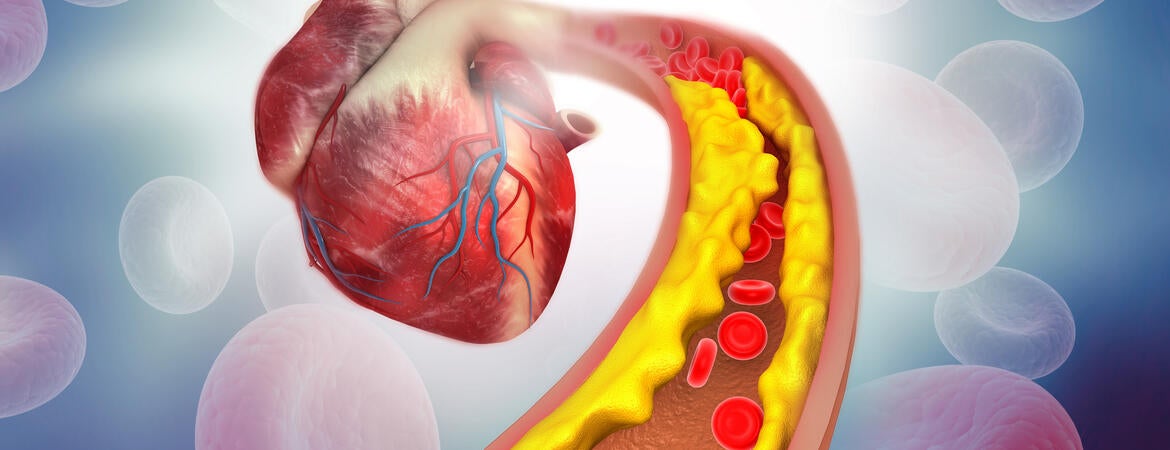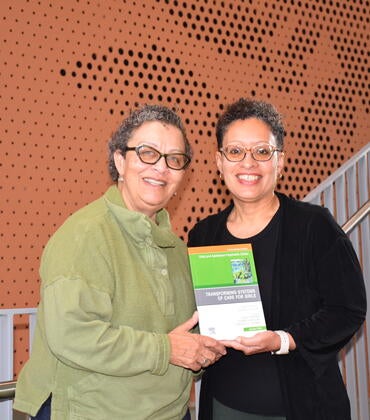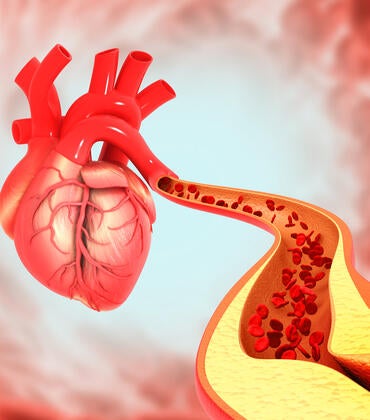
Exposure to environmental chemicals, including those in common plastic products, has been linked with an increased risk of cardiovascular disease, or CVD, the leading cause of death worldwide. According to the World Health Organization, 17.9 million people died from CVDs in 2019.
Changcheng Zhou, a professor of biomedical sciences in the School of Medicine at the University of California, Riverside, has received an eight-year award of nearly $6.8 million from the Revolutionizing Innovative, Visionary Environmental Health Research (RIVER) program of the National Institute of Environmental Health Sciences, or NIEHS, to investigate how interactions between genes and endocrine disrupting chemicals, or EDCs, may increase CVD risk.
Only five scientists, including Zhou, received RIVER grants this year. The grant “rewards outstanding environmental health sciences researchers who demonstrate a broad vision and potential for continuing their impactful research with increased scientific flexibility, stability in funding, and administrative efficiency.”
EDCs mimic, block, or interfere with the body’s hormones. They can affect reproduction and the functioning of the immune and nervous systems. They are also known to increase cancer risk. Examples are human-made chemicals used as industrial solvents/lubricants and their byproducts, as well as some plastics, pesticides, fungicides, and pharmaceutical agents. Other examples are some natural chemicals, such as phytoestrogens (estrogen-like compounds derived from plants), found in human and animal food.
How exposure to EDCs and other environmental chemicals influences CVD risk is not well understood. Recent large-scale studies found a link between exposure to EDCs and atherosclerosis, the gradual buildup of plaque — fats, cholesterol, and other substances — in and on the artery walls, resulting in the hardening and narrowing of the arteries. Treatment for atherosclerosis typically includes lifestyle changes, medicine, and surgery.
“I am humbled and honored to receive the NIEHS RIVER grant, which provides the flexible and long-term support my research program needs to conduct innovative and impactful research in an area of crucial importance to the NIEHS mission,” Zhou said. “We expect the research this grant supports will contribute to the understanding of gene-EDC interactions in predisposing individuals and their children to CVD. We will explore how chemicals in common plastics and household products can act as EDCs, singly and in mixtures, and whether microplastics can act as Trojan horses, ferrying EDCs into the body to develop atherosclerosis.”
Zhou’s prior work showed many EDCs activate a sensor in cells, called the pregnane X receptor, or PXR, which detects foreign chemicals and substances and helps regulate atherosclerosis development. The new funding will allow Zhou to study the mechanisms that allow EDCs to affect PXR in cells, leading to atherosclerosis.
“Using a mouse model, we will look particularly at circulating cholesterol and ceramide lipids and how PXR regulates them to affect atherosclerosis development,” Zhou said. “We will also explore whether male mice’s exposure to EDCs can cause PXR to alter their sperm in a way that increases CVD risk in their offspring. We hope this research will help establish a novel therapeutic target for chemical-induced CVD.”
Zhou’s lab was the first to reveal the novel function of PXR in the regulation of atherosclerosis development and showed in mouse models that widely used EDCs increase atherosclerosis through PXR signaling. Zhou’s scientific training in molecular biology, toxicology, pharmacology, and cardiovascular research uniquely positions him to investigate how gene-EDC interactions affect atherosclerosis development.
“Influences of the chemical environment on human health have become the subject of intense interest but very few studies in the EDC research field have focused on atherosclerosis development,” Zhou said. “Besides establishing a novel therapeutic target for chemical-induced cardiovascular disease, our findings from this research have the potential to revolutionize our understanding of the etiology of many chronic human diseases originating from chemical-elicited intergenerational effects.”
Header image credit: Rasi Bhadramani/iStock/Getty Images Plus.




